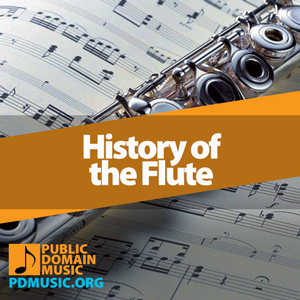 The flute, one of the oldest and most universally recognized musical instruments, has charmed listeners with its ethereal sound for thousands of years.
The flute, one of the oldest and most universally recognized musical instruments, has charmed listeners with its ethereal sound for thousands of years.
The history of the flute spans from ancient civilizations to contemporary concert halls, embodying a rich tapestry of cultural significance, technological innovation, and musical evolution.
This article explores the fascinating journey of the flute, tracing its origins, development, and enduring legacy in the world of music.
Origins and Ancient Civilizations
Contents
The flute’s history begins in the prehistoric era, with the earliest known instruments dating back over 35,000 years. Found in present-day Germany, these primitive flutes were carved from bird bones and mammoth ivory, indicating the instrument’s significance in early human societies.
The simplicity of the design—hollow tubes with holes for altering pitch—belies the flute’s profound impact on communal rituals, storytelling, and early musical expression.
Ancient civilizations across the globe embraced the flute. In Egypt, depictions of flute-playing date back to 4000 BCE, illustrating its role in religious ceremonies and royal courts.
Similarly, in ancient Greece, the flute was integral to cultural life, accompanying poetic recitations, dances, and theatrical performances. The instrument’s presence in these societies speaks to its universal appeal and versatility.
The Renaissance and Baroque Periods
The Renaissance period heralded a significant evolution in the flute’s design and musical role. The introduction of the key system allowed for more accurate intonation and greater chromatic capability. This period saw the flute becoming a favorite in courtly music and folk traditions alike, celebrated for its lyrical quality and expressive potential.
The Baroque era marked another pivotal chapter in the flute’s history. The invention of the transverse flute, or the side-blown flute, in the late 17th century, replaced the earlier end-blown models, offering a clearer, more powerful sound.
Composers like Vivaldi, Bach, and Handel composed extensively for the transverse flute, embedding it firmly in the orchestral and solo repertoire. This era also introduced the flute’s smaller relatives, the piccolo and the alto flute, expanding the instrument’s range and versatility.
Classical and Romantic Transformations
The Classical period witnessed further refinements in the flute’s construction, most notably by Theobald Boehm in the 19th century. Boehm’s revolutionary design—a cylindrical bore with a sophisticated key mechanism—greatly enhanced the instrument’s tonal beauty, agility, and dynamic range.
This “Boehm system” flute is the basis for the modern flute used today. The Romantic era celebrated the flute’s expressive capabilities, with composers like Schubert, Brahms, and Tchaikovsky featuring the instrument prominently in their works. The flute’s ability to convey deep emotion and nuanced musical textures was fully realized during this period.
The 20th Century and Beyond
The 20th century ushered in an era of unprecedented experimentation and diversity in flute music. Avant-garde composers explored new techniques such as extended ranges, microtones, and multiphonics, pushing the boundaries of the instrument’s capabilities.
Jazz musicians, too, embraced the flute, with artists like Herbie Mann and Hubert Laws infusing the instrument with improvisational flair and rhythmic complexity.
Today, the flute remains a staple of orchestras, bands, and solo performances worldwide. Its enduring appeal lies in its pure, vibrant tone, capable of both powerful projection and delicate subtlety. Contemporary flutists continue to expand the instrument’s repertoire and techniques, ensuring its place in the evolving landscape of music.
The Flute in World Cultures
Beyond the Western classical tradition, the flute holds a special place in the music of many cultures around the globe. From the bansuri of Indian classical music to the shakuhachi of Japan, the dizi of China, and the panpipes of the Andes, flutes of various designs and materials contribute to the rich diversity of global music traditions.
These instruments, each with their unique timbres and playing techniques, underscore the flute’s universal resonance and adaptability.
Summary
The history of the flute is a testament to human creativity and the universal language of music. From its humble beginnings in the hands of prehistoric peoples to its sophisticated incarnations on today’s concert stages, the flute has journeyed through millennia, evolving and adapting but always retaining its capacity to inspire and enchant.
As we look to the future, the flute’s legacy continues to unfold, promising new chapters of innovation, exploration, and musical expression.
Frequently Asked Questions
How has the design of the flute changed over time?
The flute has evolved from simple bone or bamboo tubes in ancient times to the sophisticated metal instruments of today, incorporating complex key mechanisms designed by Theobald Boehm in the 19th century that improved its range, intonation, and playability.
What different types of flutes exist in world music traditions?
World music traditions feature a wide variety of flutes, such as the Western concert flute, the bamboo bansuri from India, the Japanese shakuhachi, the Chinese dizi, and the Andean panpipes, each with unique designs and sounds reflecting their cultural origins.
Can the flute be used in different music genres outside of classical music?
Yes, the flute is versatile and used across various music genres, including jazz, where it adds a unique timbre and improvisational possibilities, and in contemporary pop and rock music, enriching the sound palette with its lyrical quality.
What role does the flute play in an orchestra?
In an orchestra, the flute is a leading member of the woodwind section, known for its ability to produce bright, clear tones that carry melody lines, and it often plays harmonious and decorative roles that add texture and color to the overall sound.
